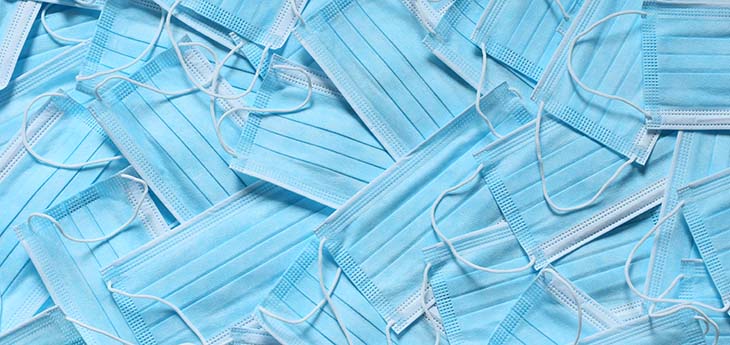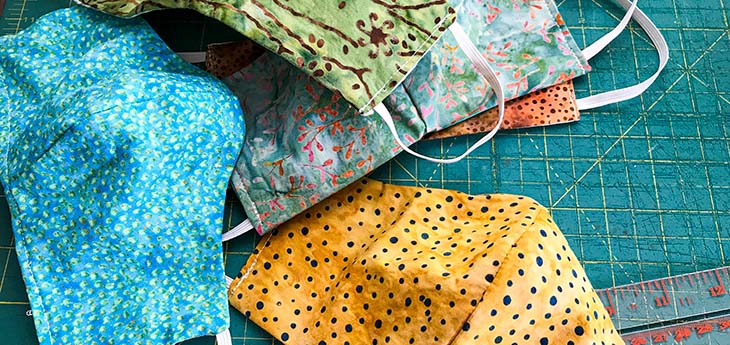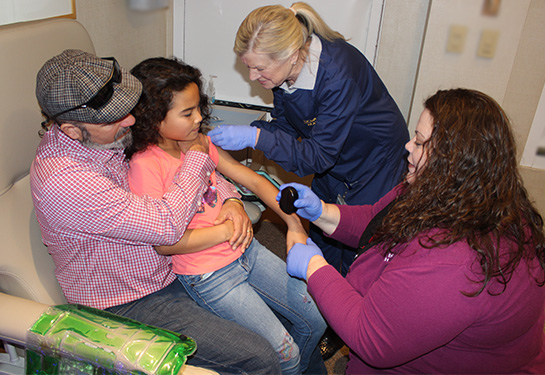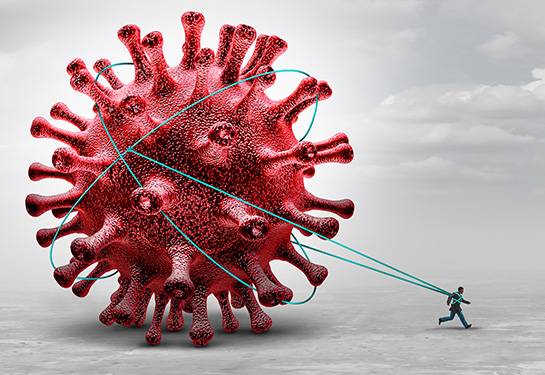Which mask protects best against the Omicron variant?
Cloth, surgical, N95 and KN95: An infectious disease expert explains what you need to know
As the highly infectious COVID-19 Omicron variant surges, the Centers for Disease Control and Prevention has updated its mask recommendations. The agency notes that people “can choose” N95 or KN95 masks and adds that N95 masks offer “the highest level of protection.” But the CDC also makes it clear that whatever the type, the most important thing is to wear a well-fitting mask consistently.
Several scientific studies prove that masks are effective for protecting yourself and others from this contagious illness.
In this article and series of videos, UC Davis infectious disease specialist Natascha Tuznik provides guidance about masking. She discusses what kind of mask is most effective in which settings, how to get the most protection from your mask and how to spot a counterfeit N95 or KN95.
When to wear a mask
Everyone should be masking when indoors around anyone not in their household. Masking outdoors when in crowded situations is recommended, as well. It’s important to remember that you may be asymptomatic and not know you are infected but still able to spread COVID-19. Masking up in these situations helps to protect vulnerable people you could unknowingly infect. Your mask should cover your mouth and nose and be tight-fitting but still comfortable.


Best and most effective: N95 and KN95 masks
If you’re in an enclosed space where you can’t distance from people, like a busy airport or inside of an airplane, we’re recommending some form of an N95 respirator. Two examples are N95 and KN95 masks. The N95 is the American standard and has straps that go around your head; the KN95 is the Chinese or Korean standard and has ear loops. The “95” in its name means it filters out 95 percent of microparticles.
How to spot a counterfeit N95 or KN95 mask
About 60 percent or more of KN95s circulating in the U.S. are counterfeit, so you need to check. Look for these things to spot real masks from the fakes: the brand name, serial number and lot number are almost always printed on the real ones. N95s also will be printed with the acronym “NIOSH,” which stands for National Institute for Occupational Safety & Health. Here are more ways to spot a fake N95 or KN95 mask. The Centers for Disease Control (CDC) website has a list of approved masks.
Is it OK to reuse an N95 mask?
N95 masks are intended to be for one-time use, but there are ways to prolong their use and keep them clean. It’s best to wait a couple of days between uses. According to experts, most viral particles will die off within 1-2 days, so after use, hang the mask in a cool, dry isolated place or store in a brown paper bag (this also works with surgical masks). Wait 24-48 hours before using the mask again.
It would be ideal to have two or three N95s on hand so you can rotate them. Also, make sure you reuse only your own mask. Never share masks.
How many times can you reuse an N95 mask?
The current CDC guidelines say in general not to reuse an N95 mask more than five times. If the mask is visibly stained, soiled, frayed, wet, or the straps are loose, toss it. This means the mask’s integrity is considered to be compromised, even if it’s only been used once or twice.
How to maximize N95 mask uses
It’s important to practice good techniques when putting the mask on or taking it off (as demonstrated in the video). Use clean hands, avoid touching the inside of the mask and avoid touching the outside as much as possible, as it may have become contaminated. Handle the edges or straps instead. Never wash an N95 mask. Washing will damage its integrity and functionality.


Better and more effective than cloth: surgical masks
Because omicron is more contagious, we recommend people upgrade from cloth to surgical when possible. Surgical masks are inexpensive and are made of three layers. They should thoroughly cover your nose, mouth and chin.
A trick for better fitting surgical masks: knot and tuck
A great hack for eliminating the gaps on the sides of your surgical mask is the knot and tuck method. This works well for kids or adults with smaller faces. [Watch the video to see Dr. Tuznik demonstrate how it’s done.]
How often to replace your surgical mask
I see people re-wearing surgical masks too many times, and that’s a mistake. To minimize contamination from hands, you should try to keep on your mask as long as you can throughout the day. It’s recommended that you replace your surgical mask every 24 hours, and definitely whenever it’s visibly soiled or dirty. Between uses, you can keep it inside a clean paper bag.


Good and effective: cloth masks
Cloth masks can be good if you choose one that’s functional rather than fashionable. See how many layers it has: the more layers, the better. Cloth masks that have multiple layers – such as those that have a pocket for a filter – will offer the most protection. If you hold up a cloth mask to the light, you don’t want to see a lot of light penetrating through. Make sure you cover your nose and chin, adjust the bendable nose piece to fit and tighten the ear loops as needed. If your ear loops are too loose, you can buy adjusters to tighten the loops behind your ears or wrap behind your head. These are widely available online.
You should wash and dry your cloth masks regularly – preferably after daily use. So it’s a good idea to have extras on hand while others are in the wash.
Why and how to double mask
If you want even better protection, wear your cloth mask on top of a surgical mask. This reduces gaps and provides a better seal around your nose and mouth.




